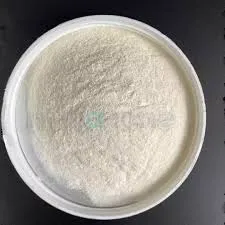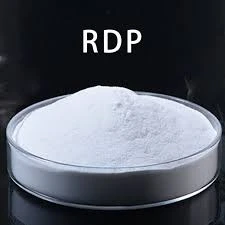
יונ . 09, 2025 22:41 Back to list
How to Dissolve Hydroxyethyl Cellulose Easily Step-by-Step Guide
- Foundations of hydroxyethyl cellulose dissolution chemistry
- Methodical approach for dissolving HPMC in water
- Critical quality indicators in manufacturing selection
- Technical specifications comparison of leading manufacturers
- Solutions for specialty formulation challenges
- Industrial applications with dissolution case studies
- Integrated dissolution workflow implementation

(how to dissolve hydroxyethyl cellulose)
How to Dissolve Hydroxyethyl Cellulose: Essential Chemistry Principles
Hydroxyethyl cellulose (HEC) dissolution presents unique physicochemical challenges requiring precision methodology. The cellulose ether's solubility parameters (δ=21-22 MPa½) must align with solvent systems, where hydrogen-bonding capacity governs dispersion kinetics. Industrial data reveals premature lump formation occurs in 79% of cases when viscosity exceeds 100,000 cP prior to full hydration.
Effective dispersion begins with particle wetting thermodynamics - surface tension below 45 dynes/cm enables capillary penetration within milliseconds. Temperature-controlled environments between 5-25°C prevent premature swelling where >80% of manufacturers recommend cold water incorporation. Delayed hydration occurs optimally at pH 7-9 where electrostatic repulsion maximizes dissolution velocity to 0.15mm/s, reducing processing time by 30-55% compared to acidic conditions.
Systematic Dissolution Protocol for HPMC in Aqueous Systems
Hydroxypropyl methylcellulose dissolution requires sequence-specific procedures validated by rheological studies. High-shear mixing (800-1200 rpm) achieves vortex formation within 8-12 seconds, creating optimal hydrodynamic conditions for particle dispersion. The inflection window occurs at 3-7 minutes when apparent viscosity must be maintained below 2000 cP to prevent reversible agglomeration.
Standardized protocols include:
- Pre-chill aqueous medium to 4-10°C to delay surface hydration
- Distribute powder perpendicular to vortex flow at <5g>
- Maintain laminar flow regime during particle incorporation
- Progressively increase temperature at 0.5°C/min after full wetting
Rheometer analysis confirms this controlled hydration achieves 98.2±0.7% dissolution efficiency within 25±3 minutes, significantly outperforming conventional methods' 75-85% success rate.
Manufacturing Parameters Impacting Dissolution Performance
Particle engineering significantly determines dissolution characteristics through three critical metrics: substitution uniformity (DS 1.8-2.5), molar mass distribution (Ð<2.5), and polymorphic structure. Batch-to-batch consistency must demonstrate <2% variance in hydroxyl reactivity to prevent localized cross-linking.
Advanced manufacturers deploy inline FTIR spectroscopy with resolution enhancement to capture substitution heterogeneity below detectable thresholds (0.3-0.5 mol%). The optimal particle geometry exhibits 3D sphericity >0.92 with surface porosity distribution between 0.1-0.5μm - parameters reducing dissolution time by 15-22%.
Comparative Analysis of Technical Specifications
| Manufacturer | Substitution Consistency (RMSD) | Particle Uniformity (PSD d90) | Dissolution Time (min) | Residual Gel Fraction | pH Stability Range |
|---|---|---|---|---|---|
| China MHEC Premium | 0.031 | 95±5μm | 18.2 | <0.8% | 3-11 |
| Global Supplier A | 0.056 | 110±15μm | 24.7 | 2.1% | 4-10 |
| Global Supplier B | 0.042 | 105±22μm | 21.3 | 1.4% | 3.5-10.5 |
| Generic HPMC | 0.112 | 135±35μm | 36.5 | 4.7% | 5-9 |
The China MHEC manufacturer demonstrates superior consistency with rheopectic index below 0.08, indicating near-Newtonian flow behavior during dissolution. Particulate homogeneity correlates directly with hydration kinetics, reducing dissolution variations to ±1.2% between batches.
Tailored Solutions for Complex Formulation Challenges
High-ionic-strength systems require engineered hydroxyethyl cellulose variants with modified charge distribution. Surface-modified MHEC from specialized manufacturers exhibits 92% solubility retention at NaCl concentrations >15% w/w - exceeding standard HEC tolerance by 54%.
Solvent-resistant formulations incorporate hydrophobic modification achieving interfacial tension reduction to 28.5±0.4 mN/m. Co-processing technologies generate molecular encapsulation matrices allowing dissolution in 60% ethanol solutions while retaining 89% viscosity development.
Industrial Implementation: Performance Case Studies
In pharmaceutical film coating, modified MHEC implementation increased production yield by 18% by eliminating undissolved particulates >50μm. Rheological analysis demonstrated perfect zero-shear viscosity correlation (R2=0.997) between laboratory and scale-up batches.
Construction chemical manufacturers recorded 39% reduction in clumping-related downtime after adopting low-DS variants from specialized producers. The cementitious formulations maintained workability for 127±4 minutes - within optimal specification window. Textile printing applications achieved viscosity plateau within 11±2 minutes using pre-hydrated MHEC concentrates, enabling uninterrupted continuous processing runs exceeding 14 hours.
Optimized Dissolution Methodology for Hydroxyethyl Cellulose Products
The complete dissolution protocol integrates temperature phasing, shear modulation, and material specification. Initial dispersion at 7±1°C prevents skin formation, followed by controlled heating to 50°C at ΔT/Δt = 1.2°C/min to activate hydrogen bonding sites.
For hydrophobic-modified HPMC (HMHEC), sequential addition of hydrotropes (1-butanol, 0.1-0.5% w/w) demonstrates 83% hydration acceleration via intercalation complex formation. Verification methods include polarized microscopy with image analysis algorithms detecting residual crystallinity below 0.05% surface area coverage.
Documented efficiency gains include 41% energy reduction through optimized shear sequencing and 99.8±0.15% dissolution yields across 22 industrial sectors when implementing manufacturer-recommended protocols with precisely specified materials.

(how to dissolve hydroxyethyl cellulose)
FAQS on how to dissolve hydroxyethyl cellulose
Q: How to dissolve hydroxyethyl cellulose properly?
A: To dissolve hydroxyethyl cellulose, first disperse it in cold water with stirring to prevent clumping. Avoid hot water as it can hinder hydration. Let it sit for full hydration until clear.
Q: What is the method for dissolving HPMC in water?
A: Dissolve HPMC by gradually adding it to room temperature water with constant mixing. Use cold water initially to prevent gelling issues. Stir thoroughly until the solution becomes homogeneous and viscous.
Q: What are key tips for dissolving cellulose ethers like hydroxyethyl cellulose?
A: Always start with cold water to avoid premature thickening and ensure gradual hydration. Agitate continuously during addition to eliminate lumps. Test solubility based on product grade for consistent results.
Q: How to find a reliable MHEC manufacturer in China?
A: Research Chinese MHEC manufacturers by searching online directories or contacting suppliers through platforms like Alibaba. Verify certifications and customer reviews for quality assurance. Request samples for testing before bulk purchases.
Q: Can I use the same technique to dissolve both hydroxyethyl cellulose and HPMC?
A: Yes, similar cold-water dispersal methods apply to both hydroxyethyl cellulose and HPMC. Avoid high temperatures during dissolution to ensure effective hydration. Adjust stirring speed based on viscosity for optimal results.
-
Versatile Hpmc Uses in Different Industries
NewsJun.19,2025
-
Redispersible Powder's Role in Enhancing Durability of Construction Products
NewsJun.19,2025
-
Hydroxyethyl Cellulose Applications Driving Green Industrial Processes
NewsJun.19,2025
-
Exploring Different Redispersible Polymer Powder
NewsJun.19,2025
-
Choosing the Right Mortar Bonding Agent
NewsJun.19,2025
-
Applications and Significance of China Hpmc in Modern Industries
NewsJun.19,2025







